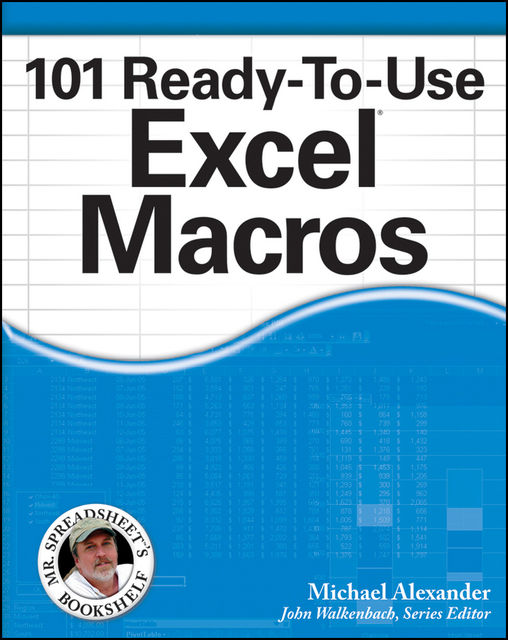
en
Olvassa alkalmazásunkban:
iOS
·Android
101 Ready-To-Use Excel Macros
Ez a könyv jelenleg nem érhető el
320 nyomtatott oldalak
Idézetek
- pablo emilio torres silvaidézett8 évvel ezelőttnext cell. After all cells in the target range are activated, the macro ends.
How to use it
To implement this macro, you can copy and paste it into a standard module:
1. Activate the Visual Basic Editor by pressing ALT+F11 on your keyboard.
2. Right-click the project/workbook name in the Project window.
3. Choose Insert⇒Module.
4. Type or paste the code.
Macro 57: Hide All Rows but Those Containing Duplicate Data
With the previous macro, you can quickly find and highlight duplicates in your data. This in itself can be quite useful. But if you have many records in your range, you may want to take the extra step of hiding all the non-duplicate rows. Doing so exposes the duplicate values further because they will be the only rows showing.
How it works
This macro enumerates through the cells in the target range, leveraging the For Each statement to activate each cell one at a time. We then use the CountIf function to count the number of times the value in the active cell occurs in the range selected. If that number is one, we hide the row in which the active cell resides. If that number is greater than one, we format the cell yellow and leave the row visible.
Sub Macro57()
‘Step 1: Declare your - pablo emilio torres silvaidézett8 évvel ezelőtt1. Step 1 declares two Range object variables, one called MyRange to hold the entire target range, and the other called MyCell to hold each cell in the range as the macro enumerates through them one by one.
2. Step 2 fills the MyRange variable with the target range. In this example, we are using the selected range — the range that was selected on the spreadsheet. You can easily set the MyRange variable to a specific range such as Range(“A1:Z100”). Also, if your target range is a named range, you can simply enter its name: Range(“MyNamedRange”).
3. Step 3 starts looping through each cell in the target range, activating each cell.
4. The WorksheetFunction object provides a way for us to be able to run many of Excel's spreadsheet functions in VBA. Step 4 uses the WorksheetFunction object to run a CountIf function in VBA.
In this case, we are counting the number of times the active cell value (MyCell.Value) is found in the given range (MyRange). If the CountIf expression evaluates to greater than 1, the macro changes the interior color of the cell.
5. Step 5 loops back to get the - pablo emilio torres silvaidézett8 évvel ezelőttSub Macro56()
‘Step 1: Declare your variables
Dim MyRange As Range
Dim MyCell As Range
‘Step 2: Define the target Range.
Set MyRange = Selection
‘Step 3: Start looping through the range.
For Each MyCell In MyRange
‘Step 4: Ensure the cell has Text formatting.
If WorksheetFunction.CountIf(MyRange, MyCell.Value) > 1 Then
MyCell.Interior.ColorIndex = 36
End If
‘Step 5: Get the next cell in the range
Next MyCell
End Sub
fb2epub
Húzza és ejtse ide a fájljait
(egyszerre maximum 5-öt)

